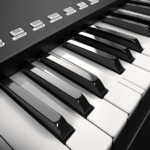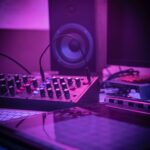For many, the thought of sitting down for piano practice conjures up images of tedious repetition and the monotonous ticking of a metronome. But what if we told you it doesn't have to be this way? That's right, piano practice can actually be a blast!
By infusing creativity, games, and a dash of modern technology, students can transform their practice sessions from mundane to marvelous. Let's dive into some innovative strategies that make learning scales and mastering compositions something to look forward to, not dread.
Set Clear Goals
Establishing clear, achievable goals is a fundamental step toward making piano practice more enjoyable. Instead of approaching practice sessions with a vague sense of what they want to accomplish, students should outline specific objectives for each session. This method transforms a potentially overwhelming task into a series of manageable, rewarding steps.
First, it's important for learners to differentiate between short-term and long-term goals. Short-term goals might include mastering a specific scale or section of a piece, while long-term goals could involve perfecting an entire song or preparing for a recital. By setting both types of goals, students can enjoy the satisfaction of achieving immediate milestones while also working towards more substantial accomplishments.
Utilizing SMART Goals
To ensure goals are effective, they should follow the SMART criteria: Specific, Measurable, Achievable, Relevant, and Time-bound. Here's how it applies to piano practice:
- Specific: Goals should be as concise as possible. For example, "Learn the C Major scale hands together at 60 bpm" is more specific than "Get better at scales."
- Measurable: Progress needs to be quantifiable. Achieving a certain tempo or mastering a set number of measures are examples of measurable objectives.
- Achievable: Goals must be realistic. Taking on too much too quickly can lead to frustration.
- Relevant: Objectives should be directly related to the student's overall musical aspirations.
- Time-bound: Setting deadlines encourages consistent practice and keeps motivation high.
Incorporating SMART goals into practice sessions encourages students to stay focused and track their progress. Celebrating each achievement, no matter how small, boosts confidence and reinforces the notion that practicing piano isn’t just about the end result—it’s about the steps along the journey.
Regular Review and Adjustment
Goals are not set in stone; they're meant to evolve as students grow and their abilities improve. Regularly reviewing goals allows students to adjust their plan based on their current progress and changing interests. This flexibility keeps practice sessions fresh and aligned with the learner’s evolving skill level and musical tastes.
Learners might find it helpful to keep a practice journal where they can jot down their goals, achievements, and reflections. Not only does this provide a sense of accomplishment over time, but it also offers valuable insights into what works best for them. They'll discover patterns in their learning style, helping them tailor future goals to be even more effective.
Gamify Your Practice
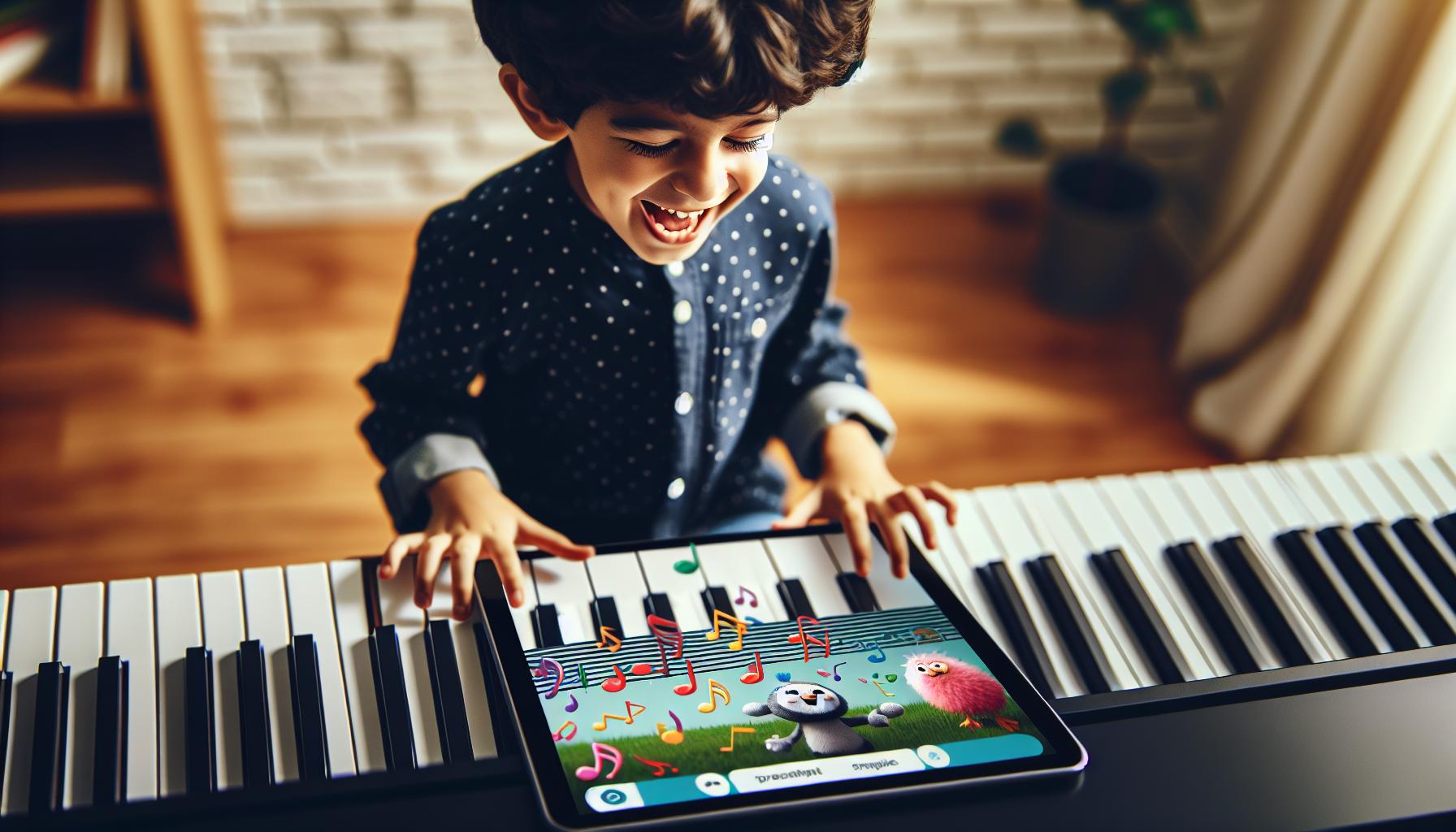
Turning piano practice into a game is an innovative way to add excitement and fun to the learning process. This approach, known as gamification, leverages the elements of game playing to motivate students to stay engaged and accomplish their musical goals.
One effective method is to incorporate music apps and online platforms designed to teach piano in a game-like setting. These tools often feature interactive lessons, immediate feedback, and rewards systems such as points or badges for mastering certain skills or pieces. By blending the structure of traditional learning with the appealing aspects of video games, students are likely to spend more time at the piano simply because they're having fun.
Setting up challenges and competitions with oneself or others is another way to gamify piano practice. This could involve setting a timer and seeing how many scales can be played correctly in a given period or trying to beat a personal record in sight-reading. For those with friends or family members who play, organizing small contests or performances can spur motivation and encourage practice.
Creating a practice reward system can also transform the pianist’s journey. For every goal met or level achieved, students might earn a reward. These rewards can be music-related, such as new sheet music or accessories, or something unrelated but motivating, like a trip to their favorite ice cream shop. What's important is that the reward is meaningful and directly tied to the accomplishment of a piano practice goal.
Below are some popular music apps that have been known to add an element of fun to piano learning:
- Simply Piano
- Yousician
- Flowkey
- Piano Maestro
Each app has its unique features, but all share the common goal of making piano practice more enjoyable and effective through gamification.
While these strategies can make practice sessions more engaging, it's crucial for students to balance gamified learning with traditional practice. The combination ensures that while they're having fun, they're also developing the discipline and technique needed to progress.
Explore Different Genres

One way to inject excitement into piano practice is by exploring a variety of musical genres. Delving into different styles can open up a whole new world of piano playing, making each session something to look forward to. Whether it's jazz, classical, pop, or even electronic music, each genre offers unique challenges and rewards that keep practice sessions fresh and engaging.
Incorporating different genres into practice routines allows learners to discover what truly resonates with them. For some, the structured beauty of classical music might be the most fulfilling, while others might find the freedom and improvisation in jazz more thrilling. Pop music, on the other hand, can be a great way to stay connected with current trends, making practice sessions not only educational but also culturally relevant.
Popular Music Apps and Their Genres
To facilitate this exploration, many music apps and online platforms offer lessons across various genres. Below is a quick overview of some popular apps and the genres they support:
| App Name | Genres Supported |
|---|---|
| Simply Piano | Classical, Pop, Jazz, and more |
| Yousician | Rock, Classical, Pop, and Blues |
| Flowkey | Classical, Pop, Film Music, and more |
| Piano Maestro | Classical, Pop, Traditional, among others |
These platforms make it easy to switch between genres, providing a vast library of songs and compositions. They often feature interactive lessons that cater to different skill levels, allowing users to progress at their own pace.
Setting Genre-Specific Goals
To make the most out of exploring different genres, it's beneficial to set specific goals. For instance, learners might aim to master a jazz piece that incorporates complex rhythms or a classical composition that challenges their technical skills. By setting such goals, learners can track their progress across different musical styles, finding joy in the diversity of their achievements.
- Enhances Musical Understanding: Learning different genres broadens one's musical vocabulary, providing a deeper understanding of music theory and composition.
- Improves Adaptability: Transitioning between genres enhances adaptability, helping learners become more versatile pianists.
- Keeps Practice Exciting: Exploring new genres keeps the curiosity alive, ensuring that practice sessions are never dull or monotonous.
Collaborate with Others
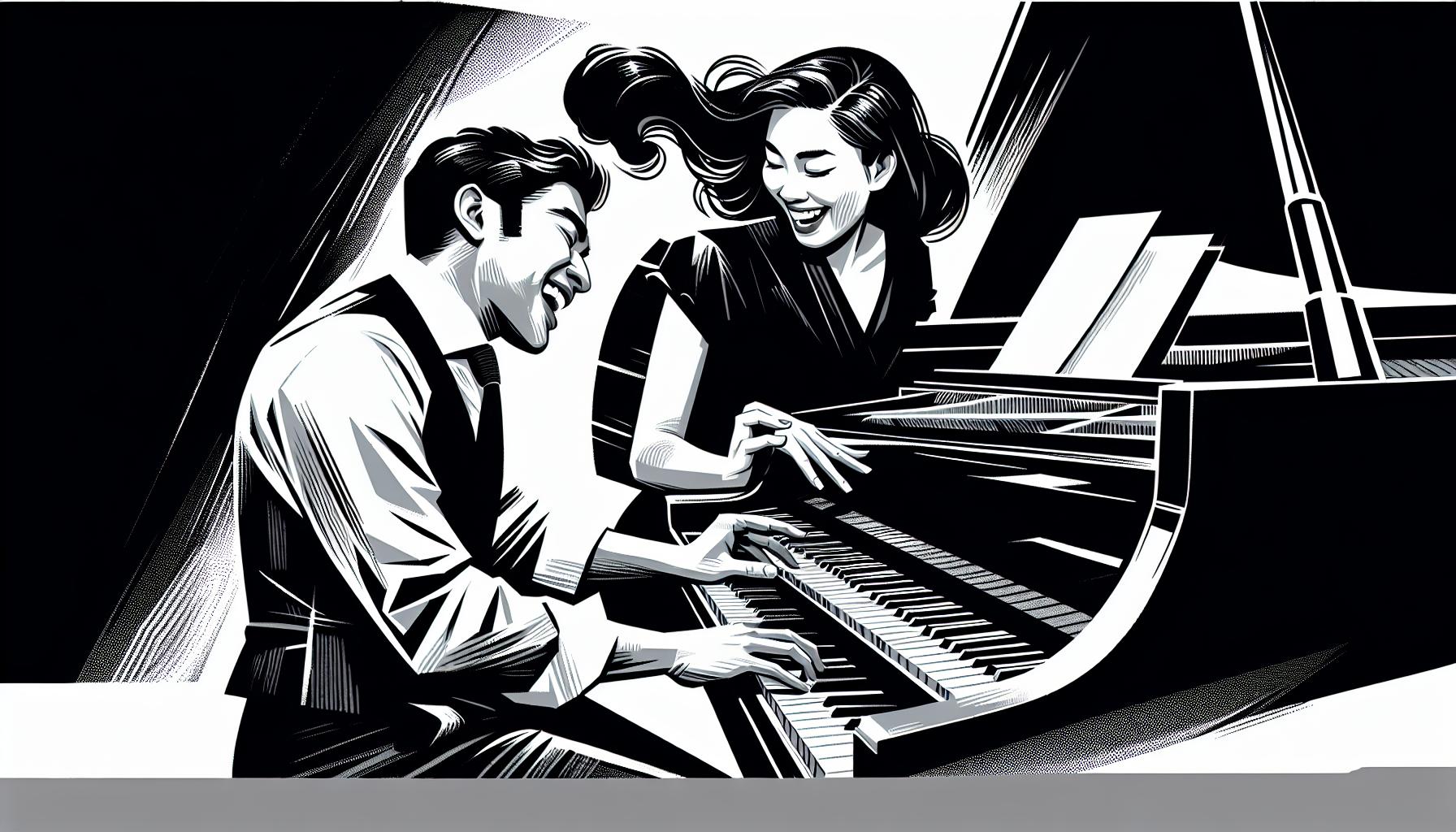
One of the most enriching ways to breathe new life into piano practice is through collaboration. Playing with others, be it in a duo, band, or even an orchestra, introduces a dynamic interaction that solo practice lacks. It's not just about playing notes together; it's about sharing a musical journey.
Discover the Joy of Duets
Duets offer a fantastic entry point for pianists looking to collaborate. They can start with a friend or a fellow student, working on pieces specifically composed for two. This partnership brings an added layer of accountability and motivation, as both players rely on each other to create a cohesive performance. Duets help build essential skills like listening, timing, and rhythm, which are crucial for ensemble playing.
Join a Band or Musical Ensemble
For those seeking a broader experience, joining a band or musical ensemble opens up a world of genres and styles beyond the traditional classical repertoire. Playing in a band allows pianists to experiment with jazz, pop, rock, and even electronic music, translating their skills into new, exciting contexts. This variety not only keeps practice sessions fun but also expands a musician's versatility and understanding of different musical frameworks.
| Benefit | Description |
|---|---|
| Enhanced Musicality | Collaborating exposes musicians to different playing styles, enhancing their own musicality. |
| Social Connections | Music becomes a medium for forming new friendships and deepening existing ones. |
| Increased Motivation | The commitment to a group keeps individuals engaged and less likely to skip practice sessions. |
| Exposure to New Ideas | Every musician brings their unique interpretations, providing a rich learning environment. |
Playing with others requires a level of openness and adaptability. Musicians need to be willing to adjust their playing to blend seamlessly with their partners, whether that means changing dynamics, tempo, or even the style of play. The communication that happens, both verbal and non-verbal, during these sessions is pivotal. It's about creating a dialogue through music, where each note and rhythm contributes to a larger musical conversation.
Utilize Technology
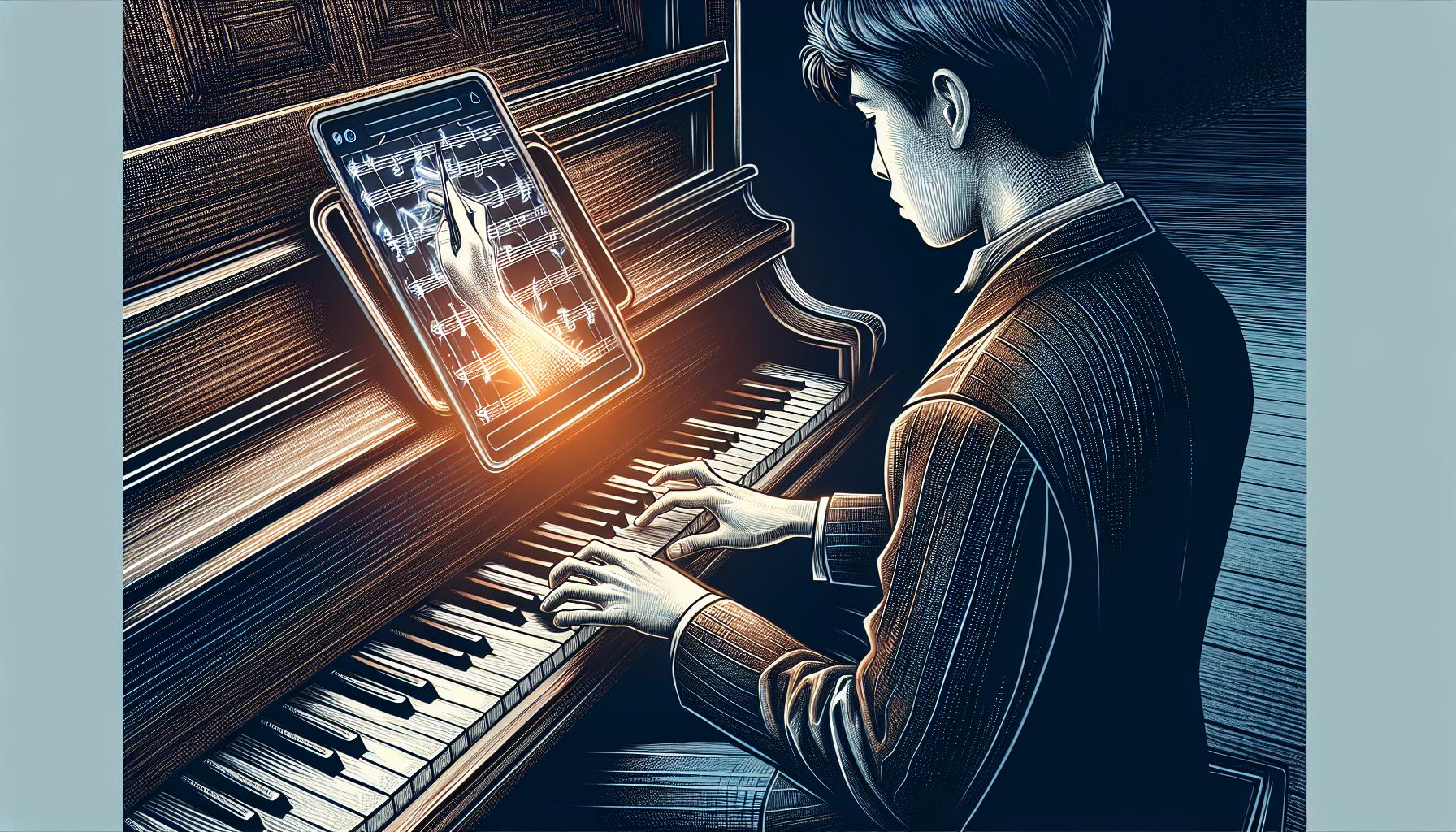
In today's digital age, technology offers an array of resources to make piano practice more engaging and effective. Many pianists, both beginners, and experts, are discovering that incorporating technology into their routine can transform the learning experience from mundane to exciting.
Music Learning Apps have revolutionized the way musicians learn and practice. Apps like Simply Piano, Flowkey, and Yousician guide users through lessons that adjust to their playing level, providing immediate feedback on timing, accuracy, and rhythm. These apps often have a vast library of songs ranging from classical to contemporary hits, ensuring that learners are constantly challenged and never bored.
Digital Scores and Sheet Music are also invaluable tools. Gone are the days of flipping through bulky music books. Now, platforms like MuseScore and Sheet Music Direct offer access to thousands of digital scores on tablets and smartphones. This not only saves space but also allows for interactive features such as automatic page turning and adjustable tempo. For those struggling with a particular piece, being able to slow down the tempo without altering the pitch can be a game-changer.
Recording and Playback Software offers another layer of feedback for self-guided improvement. Tools like GarageBand and Audacity allow musicians to record their practice sessions and listen back to them. This practice can reveal nuances and mistakes that might not be apparent in the moment, providing critical insights for improvement. Moreover, it allows for experimentation with mixing, helping pianists understand how their playing fits within the larger context of a composition or band.
Online Forums and Video Lessons foster a sense of community and provide a wealth of knowledge. Websites like Piano World Forum and platforms like YouTube have endless threads and tutorials on everything from technique and theory to gear reviews and practice tips. Watching professionals play and explain concepts can be incredibly motivating, and the ability to ask questions and share progress with a global community of fellow pianists offers support that can make the journey less isolated.
Integrating technology into piano practice isn't just about making it fun; it's about enhancing learning through interactivity, feedback, and access to a global community. As musicians explore these tools, they often find that their practice becomes more focused, efficient, and, most importantly, enjoyable.
Conclusion
Making piano practice fun isn't just about what you play but how you play it. By embracing the technology at our fingertips, we open up a world of possibilities that can transform the traditional piano practice into an exciting and rewarding journey. Whether it's through interactive apps, digital scores, or connecting with a global community, the key is to find what excites you and incorporate that into your routine. Remember, the goal is to enjoy the process as much as the progress. So go ahead, experiment with these tools, and watch your piano practice come to life in ways you never imagined.
Harlan Kilstein began playing piano during covid with no piano background at all. He taught himself how to play learning what to do and what not to do.
Today he's an advanced intermediate player and can help you grow in your skills because he learned all this on his own.




